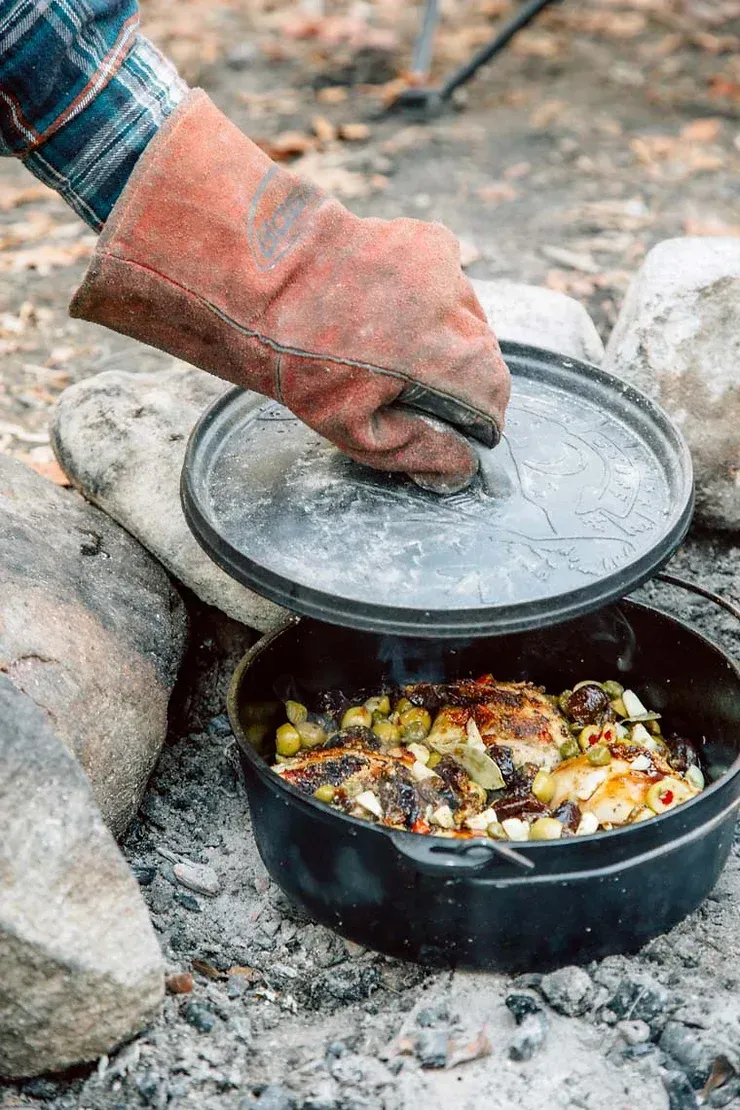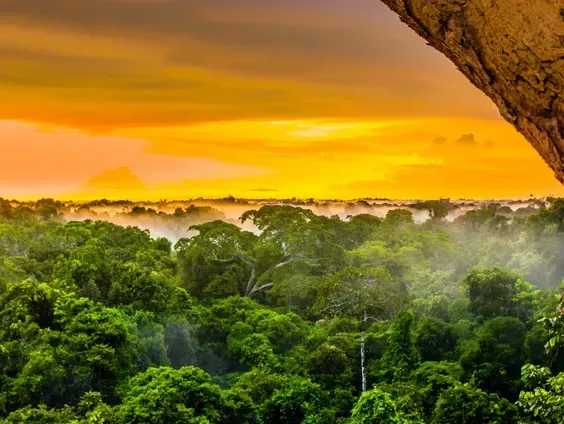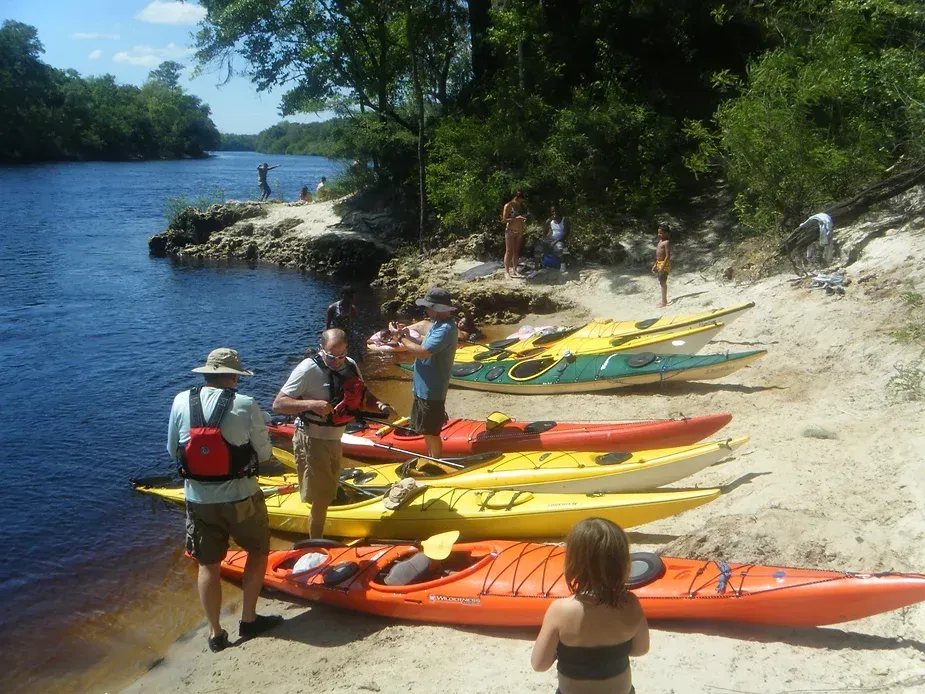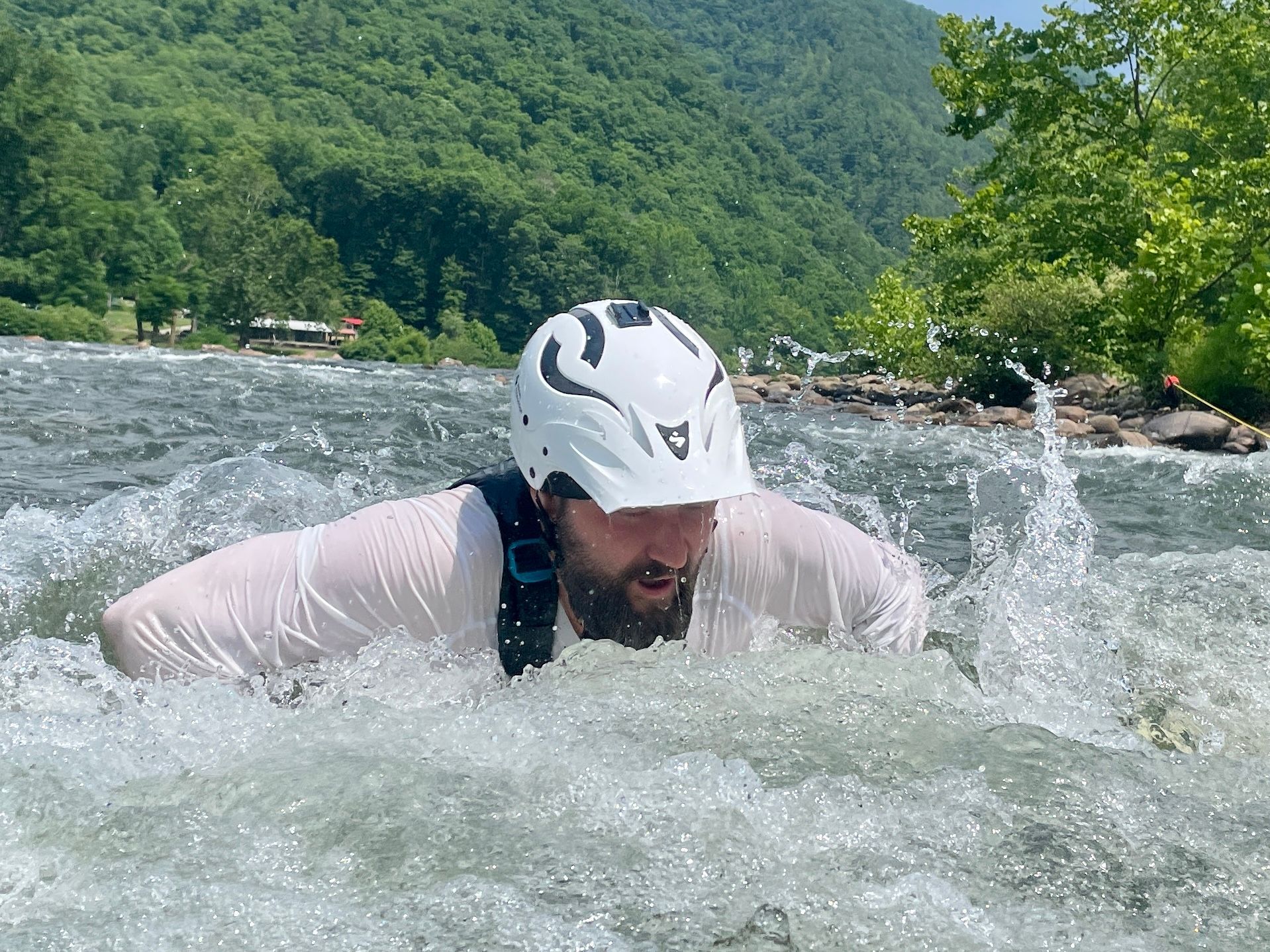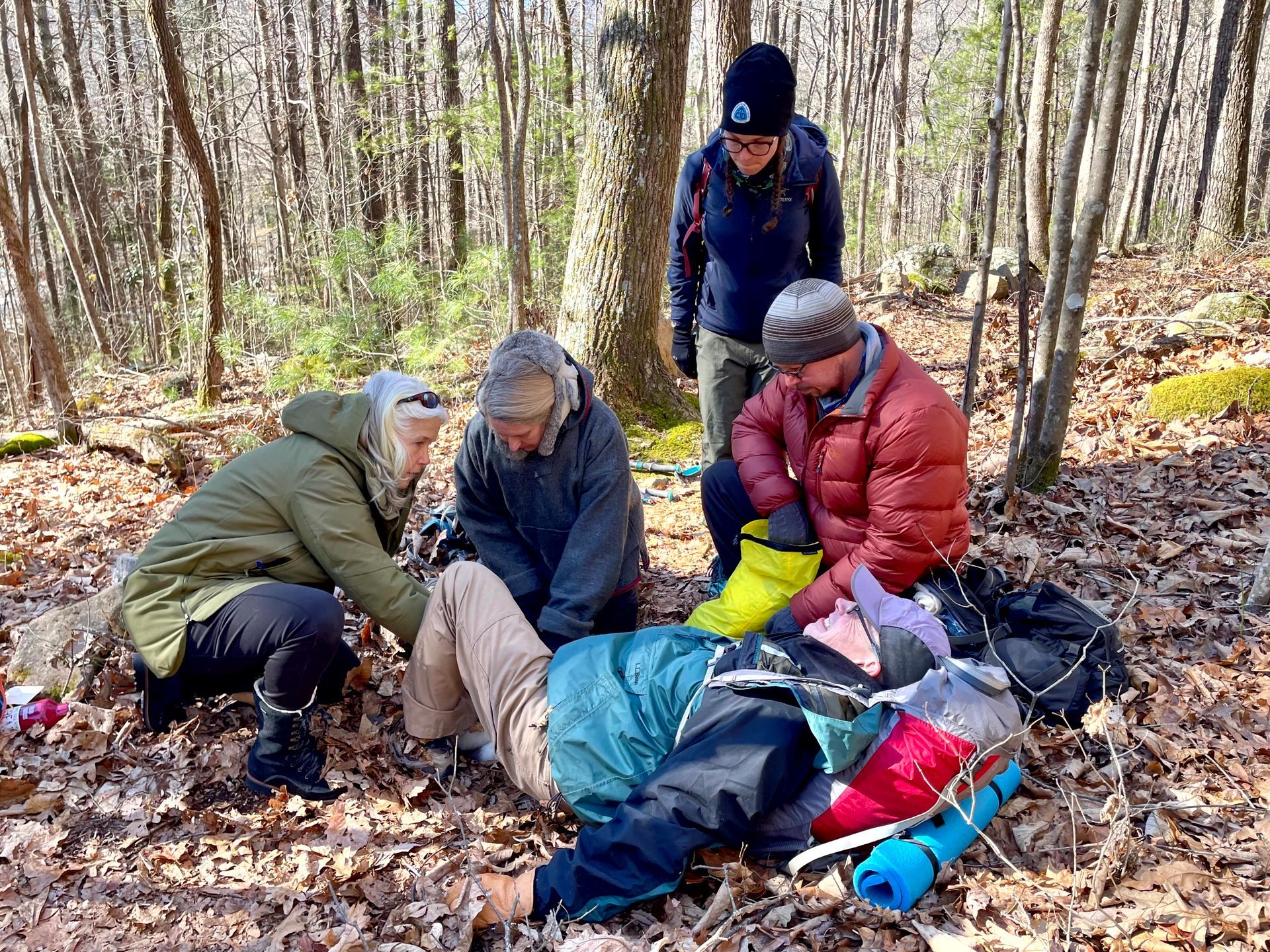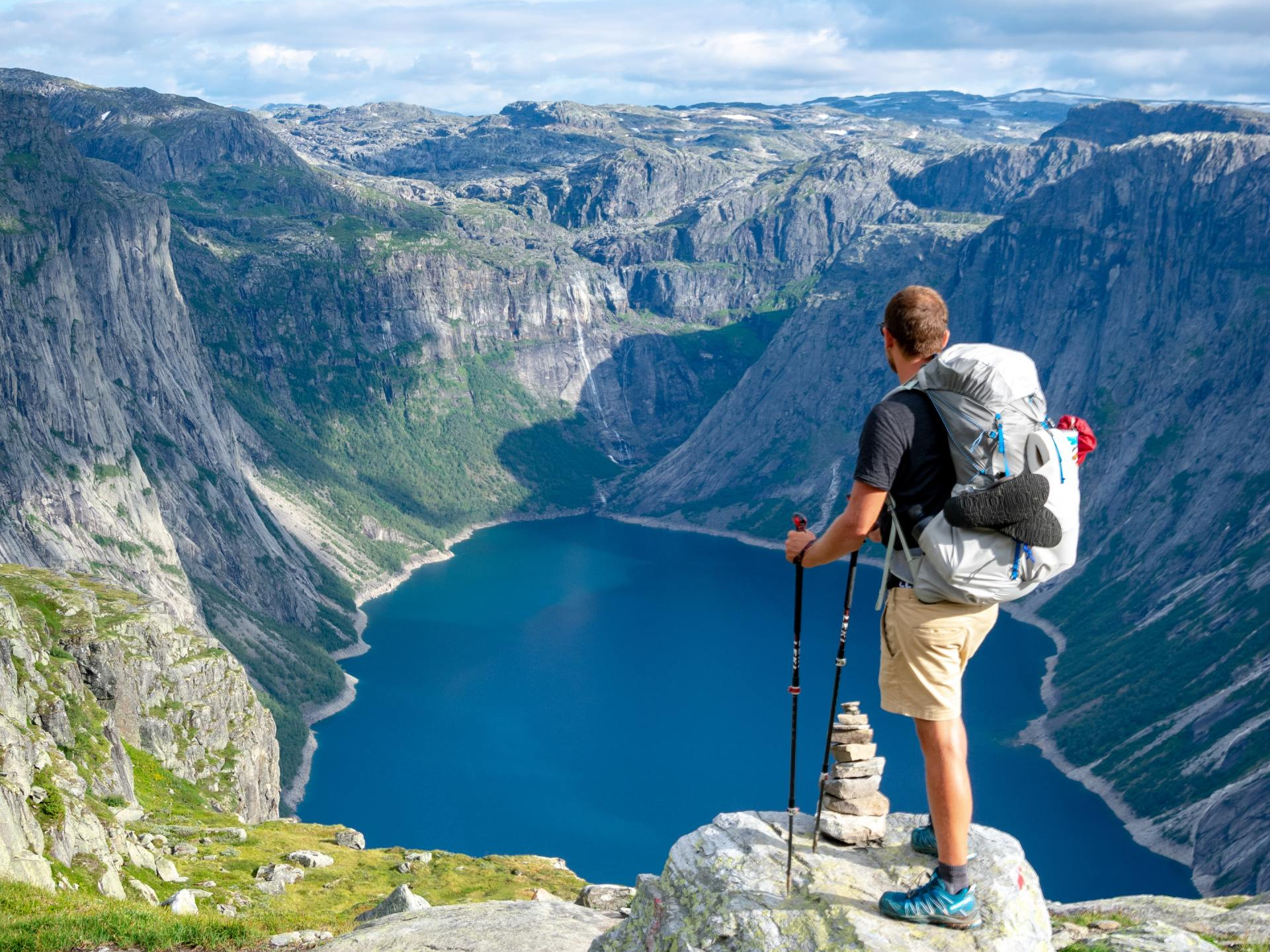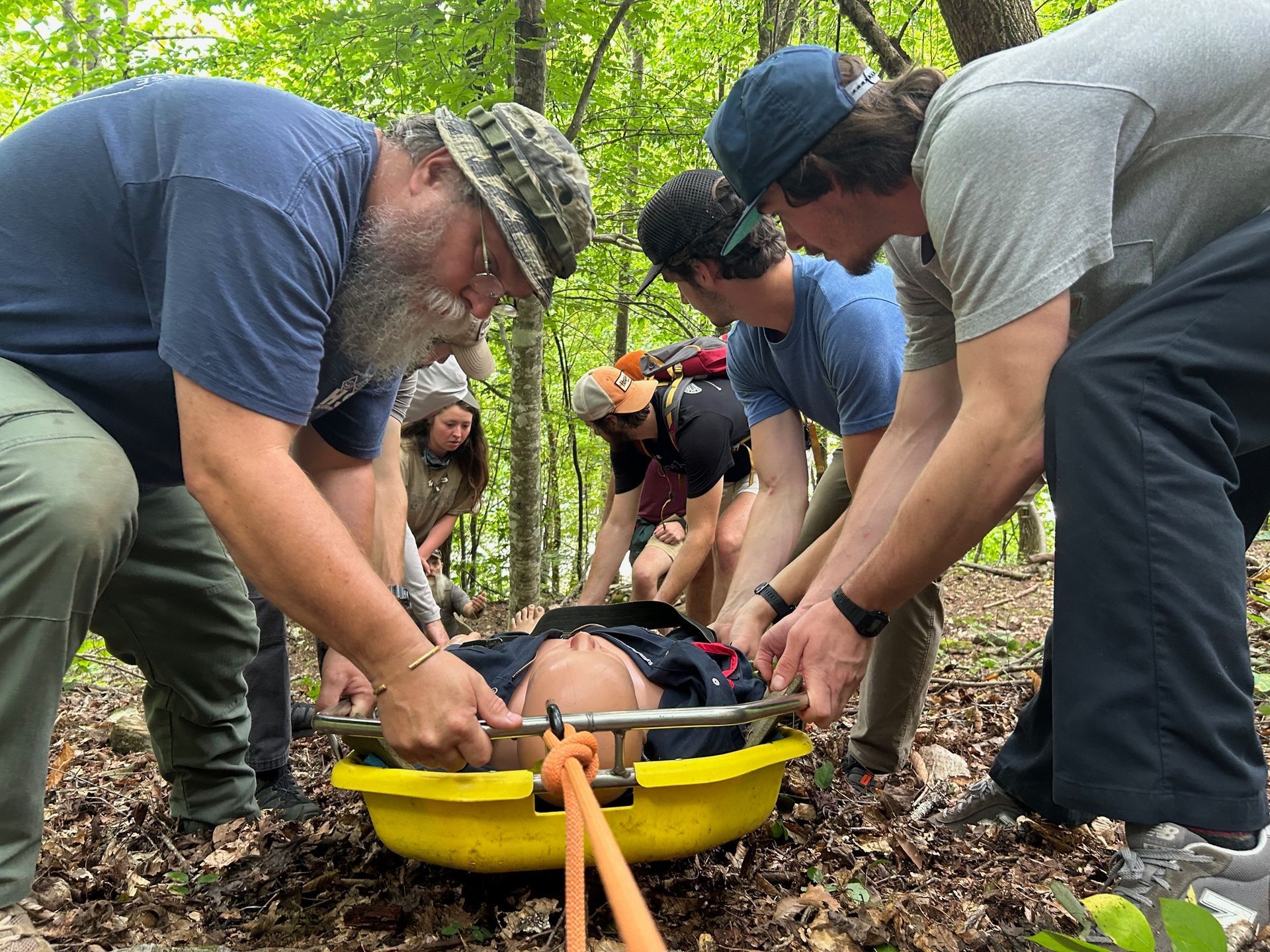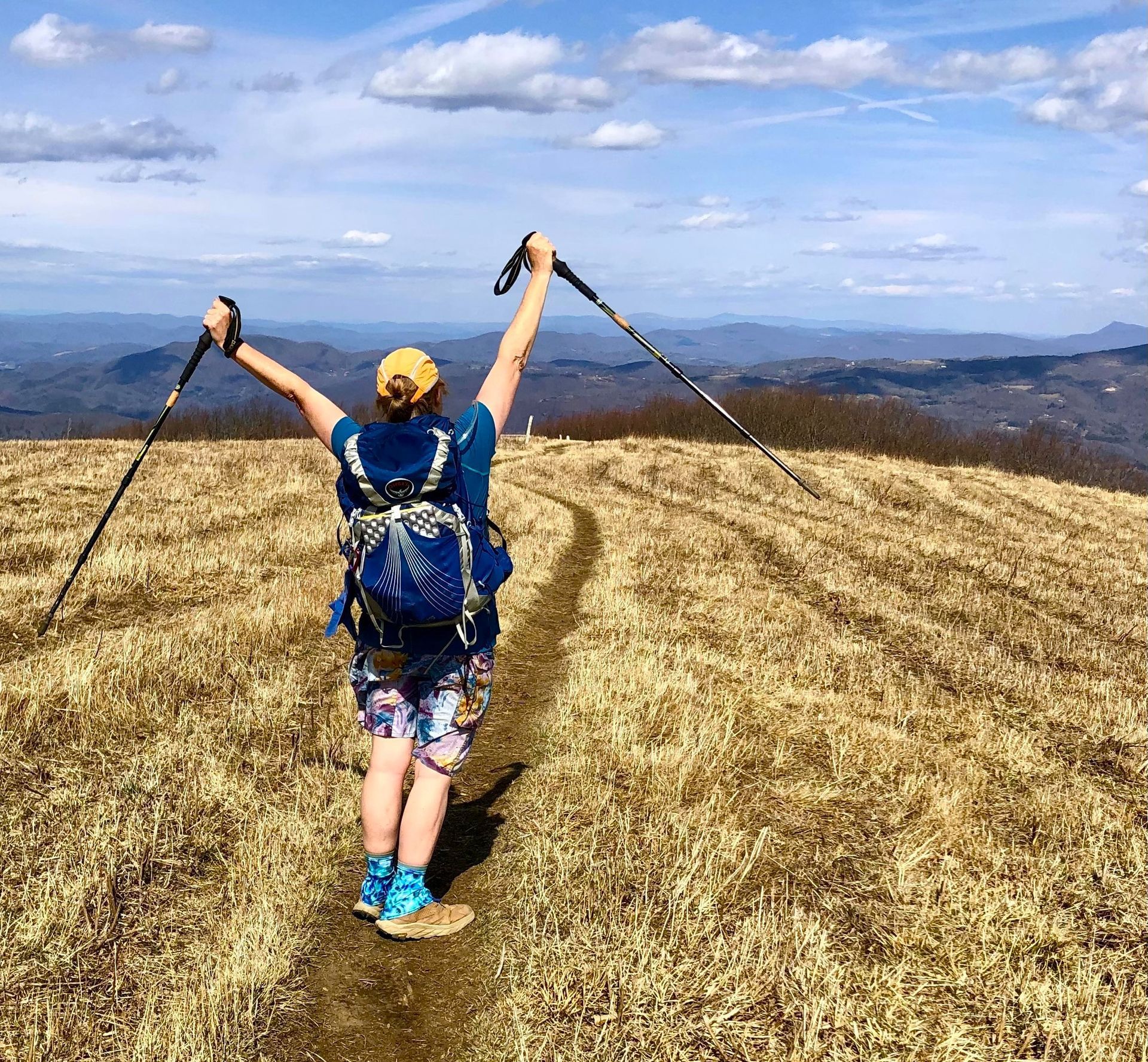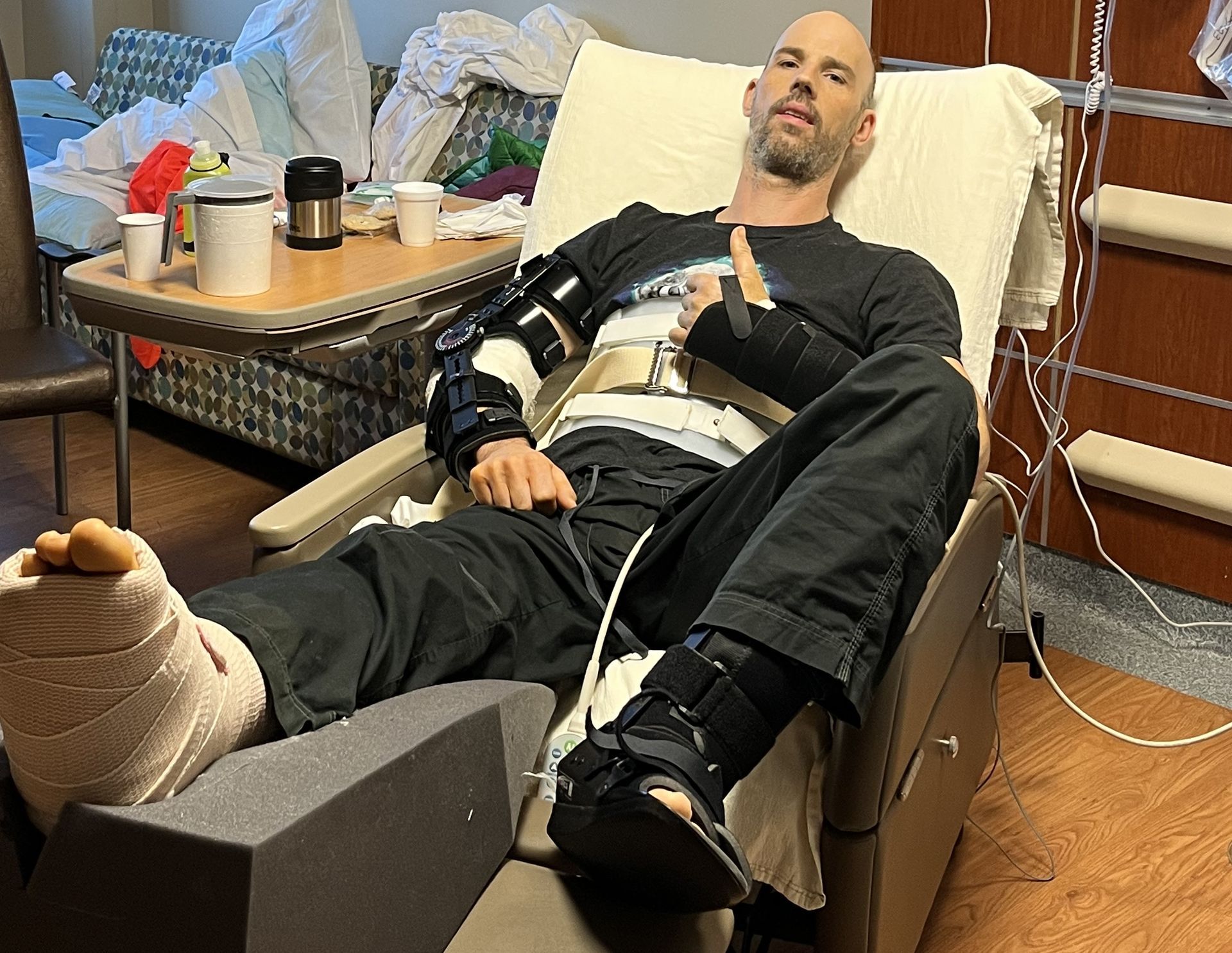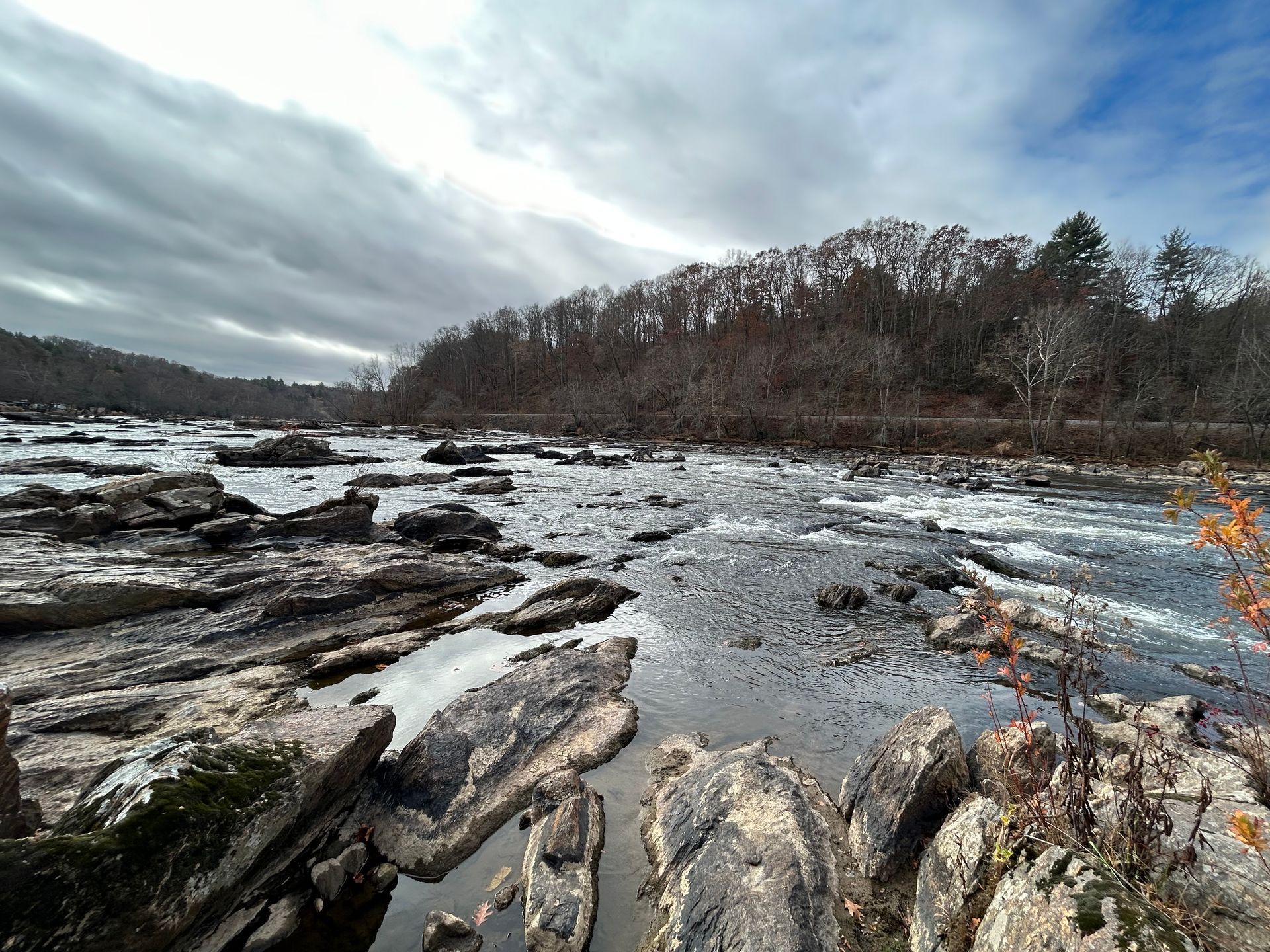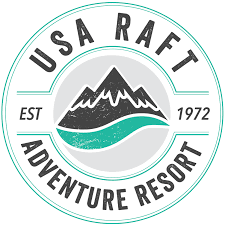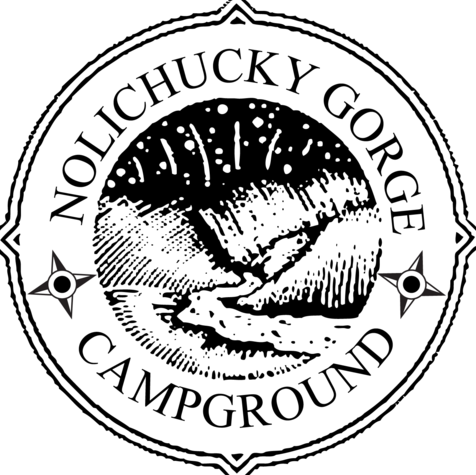NOLI Instructor Suffers Near-Fatal Fall and Comes Away with Important Lessons
The following report was originally published by the American Alpine Club in January 2023.
On December 14, 2022, Adam Herzog (43) miraculously survived a fall in which he suffered severe injuries after failing to clip into an auto belay in a climbing gym. Upon finishing the climb, he simply let go, and fell 45 feet to the ground. “I feel very lucky to be alive and not paralyzed,” said Herzog.
In Herzog’s own words:
“The fall resulted in a skull fracture, bilateral pulmonary contusions, three spinal fractures, right proximal radius fracture, left distal radius fracture, right pilon fracture (ankle shattered), left fibula fracture and a severe concussion.” His recovery is ongoing, “I was in the ICU on a ventilator for two days, and in the hospital for 15 days. I am expected to make a pretty full recovery. The pilon fracture may have some long-term effects and I lost some extension in the right arm.”
His post-accident recollections:
“I awoke in a fog of drugs. A tube was jammed down my throat. A ventilator forced air into my chest unnaturally with positive pressure. The next day I woke up extubated. My wife was there as always, helping me through another crash. But this one felt bigger than the others.
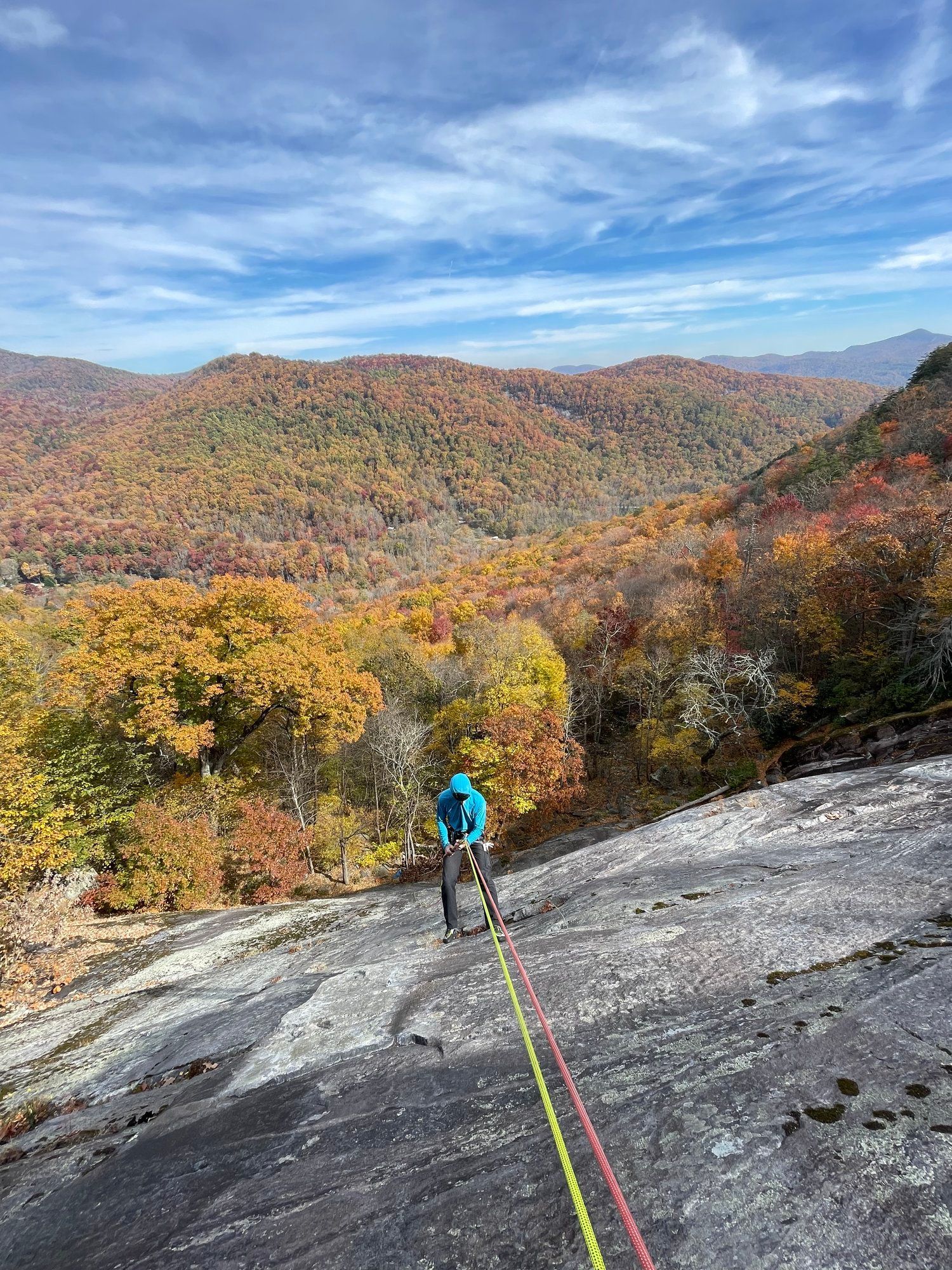
Adam rappelling before his accident. PC: Zach Frayser
“The next fifteen days I lay on the slick mattress of a hospital bed, intermittently conscious, asleep, exhausted, confused, and occasionally keenly aware that I had a long recovery ahead. I spent the next several weeks mulling over the events of December 14th. ‘How could I be so stupid?’ I wondered again and again. I beat myself up, apologized to my friends, family, and the staff at the climbing gym. I could not believe I would climb to the top of a route without clipping in. It seemed impossible.
“My friends reassured me. ‘It was an accident, man. It happens.’ A surprising number of people had similar stories of friends who took big falls on auto belays. I googled it and found a number of gym related accident reports.
Analysis
Herzog writes, “I’ve been a paramedic for 22 years and a nurse for 14. In the medical field we refer to the ‘Swiss Cheese Model’ of medical errors. All the holes line up and boom, somebody dies. My accident was a perfect storm of mistakes that coincided with catastrophic results. They are listed here in the interest of preventing other climbers from falling into the same trap:
1. Hubris: I am not an expert climber. But I am an elite whitewater kayaker. I have been padding for over thirty years. The morning of my fall I paddled the Green River at high water. Once off the Green, I thought my risk exposure was over for the day. I didn’t treat the gym with the same respect I brought to the river. I should have.
2. Heuristics: Heuristics are mental shortcuts. They help us navigate our daily lives and can be useful or harmful. In my mind, “outside = dangerous, inside = safe.” When I climbed outdoors, I neurotically practiced setting up belays, cleaning routes, and rappelling before heading out. But I saw the gym as contrived, manufactured, and fake. A fifty-foot wall is a fifty-foot wall. It doesn’t matter if there are four walls and a ceiling around it.
3. Inattention: I don’t bring my phone to the climbing wall so that I am not distracted. But the day I fell, I was preparing for a paramedic recertification exam. I studied a book between routes. I wonder if that distraction contributed to my fall.
4. Deviation: I have a system I usually stick to religiously. I climb a route, unclip, walk away, and take 5-10 minutes to rest before I approach the wall again. Before I fell, I climbed halfway up a route and dropped back down to the ground. I unclipped but instead of walking away, I immediately got back on the wall. The small deviation from my normal routine removed the visual cues that usually lead to me clipping into my harness. I am 6’4” so when standing right next to the wall, my line of sight is well above the gate.
5. Redundancy: I was climbing alone so there was no one to double check my system. In top rope and lead belay we constantly check each other’s knots. But on the auto belay it’s up to the climber to double check his or her system. In my haste I neglected to check anything.
6. Focus: The route I was on was a white (marked) 5.10. That grade is the upper limit of what I climb. Because I was at the edge of my ability, I was ultra-focused on the route and holds. That is why I didn’t notice the rope was not retracting as I climbed. Had I been on an easier route I suspect I would have been more attentive.
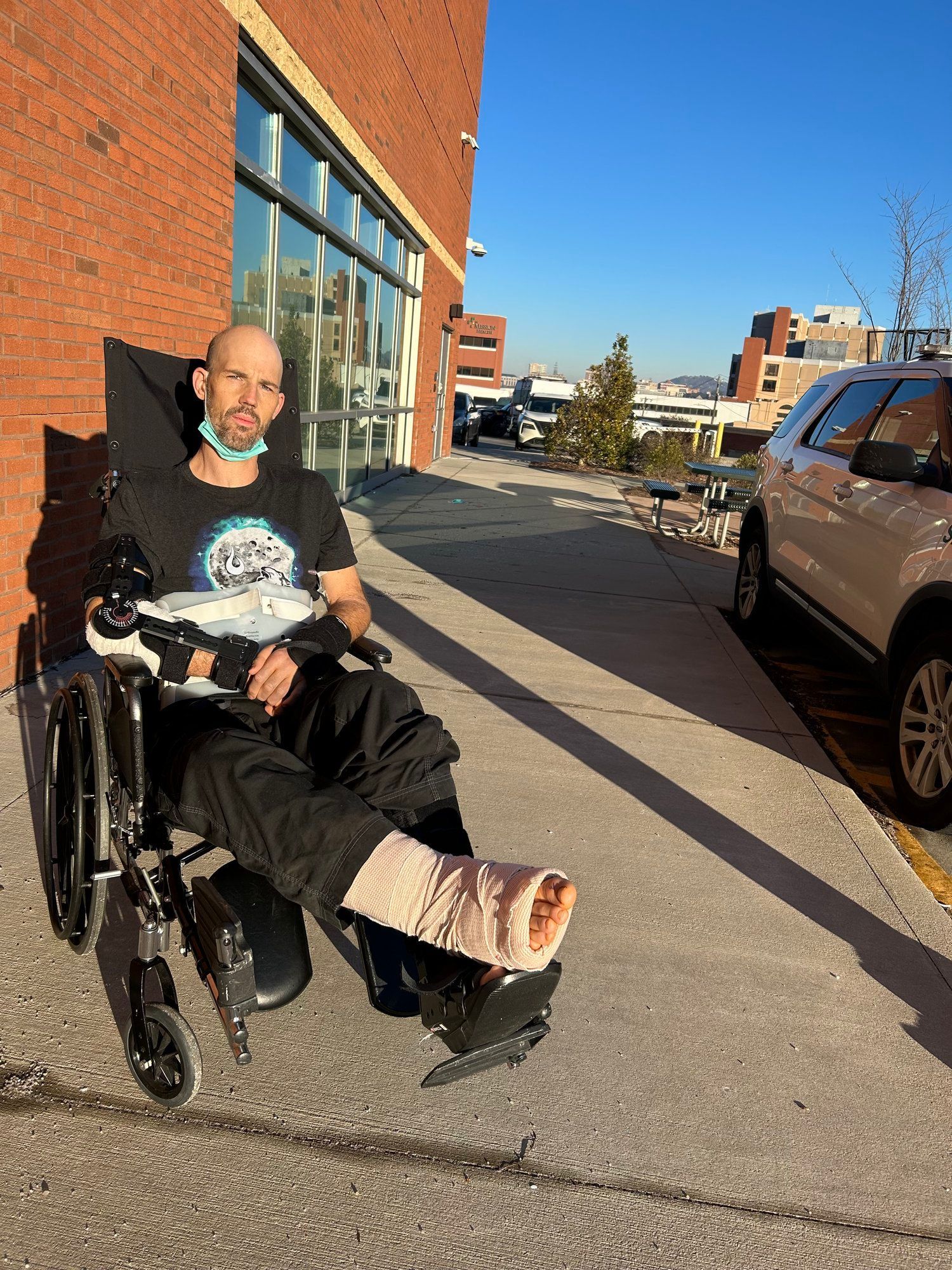
Adam after being discharged from the hospital. PC: John Parmenter
“These six factors led to my fall. I sit in a wheelchair typing this up, grateful I will only have to live in it for a couple of months. I hope that by writing this, I may prevent future incidents.
“Auto belay devices almost never fail. But people do. As long as humans are involved, mistakes happen. Are there steps gyms could take to prevent other terrible falls? Maybe, but ultimately it is the climber’s responsibility to climb safely. The gym can provide measures to mitigate risk, but we must engage those measures, and know that if we work around them, there is nothing between us and the gym floor.”
Postscript
On April 14 - four months to the day after his accident - Adam, who has a history of competing in whitewater kayak races, entered and won the Nolichucky Beat Nightfall Race, finishing the 8-mile race in just under an hour. Six weeks later he successfully completed an ACA whitewater kayak instructor course and earned his instructor certification. He attributes his recovery, which continues to this day, to a disciplined approach to rehab, training and a positive mental attitude.
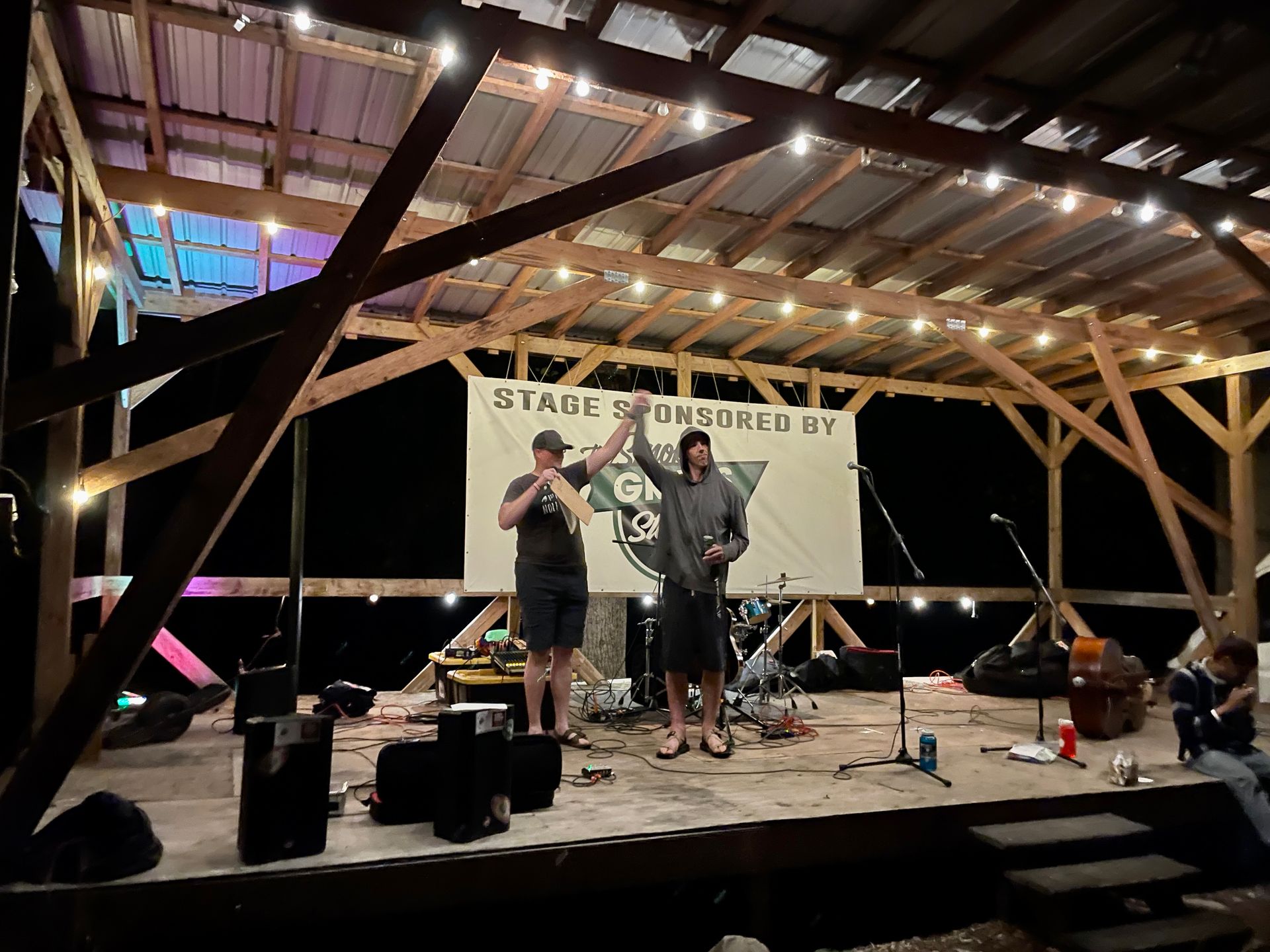
Adam after winning the Nolichucky Beat Nightfall Race, four months after his accident
Adam Herzog is a NOLI instructor and elite-level kayaker who has been kayaking for over 30 years. He has notched podium finishes and wins in Jerry’s Baddle, the Watauga Race, the Chatooga Race, the Baddle of the Broad, and the Nolichucky Race. Adam has paddled extensively in the U.S. and Canada. In 2022 he completed his lifetime goal of successfully paddling the Grand Canyon of the Stikine River, considered to be the Mount Everest of kayaking.
To schedule instruction with Adam or one of our other exceptional instructors, go to www.nolilearn.org.
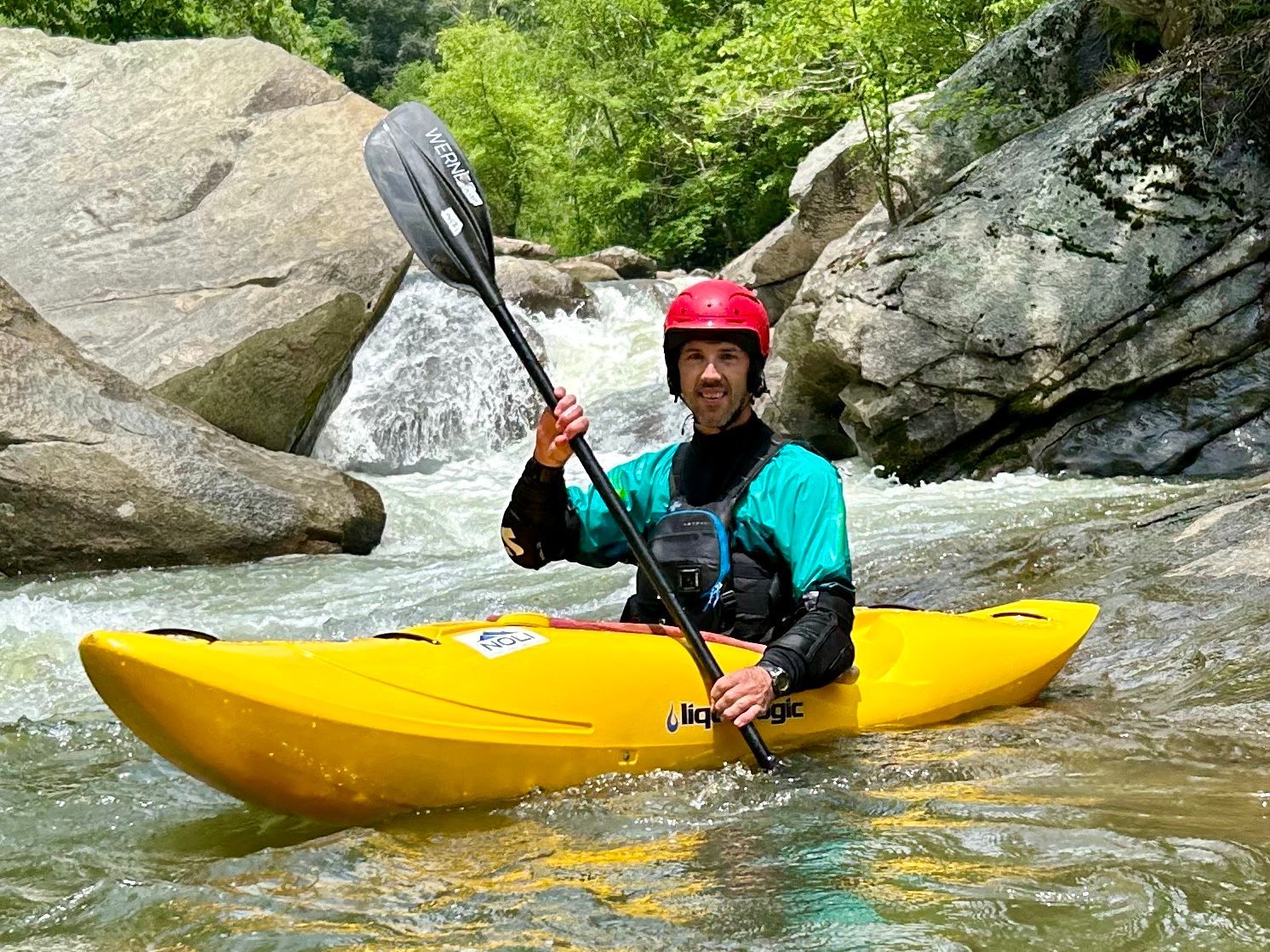
Adam on the Green Narrows in NC.

